 USN flying boat (1935)
USN flying boat (1935)
The angel of the Atlantic
The PBY Catalina was during WW2 both a spy and vengeful angel of death for U-Boats, and an angel of mercy for their victims. With more than 3,300 produced, perhaps more than 4,000 in all versions, it was the most common flying boat of WW2. Like the Swordfish also one of the most memorable fleet air arm aircraft for its historical significance. A few spotting fleets often decisively, while thousands others just served reliably and without fanfare, far more often saving lives than taking those. The Catalina also had a very long career spanning the cold war and beyond, notably in the civilian market, still in service today, 80 years after its introduction. In ten years from now (2020), some still flying would be 100 years old. Their pilots kept fond memories of these rugged beast of burdens, yet agile and powerful. The Catalina definitely passed into the legends of aviation and easily can be the most underrated US plane of WW2. What are your thoughts ?
Development
The saga of the PBY started, as often, with a requirement. In the 1930s, USN doctrine emphasised the use flying boats in a wide variety of roles today handled by many special-purpose aircraft. Previously, the USN used the Consolidated P2Y and Martin P3M in 1931, but both soon appeared underpowered and lacking both range and payload. Therefore three years afterwards, the U.S. Navy contracted several companies to submit tenders for a long range patrol flying boat capable of covering the Pacific. Missions were diverse, locating and attack enemy transport ships to disrupt supply lines (the Japanese being the most likely), and reconnaissance. The ASW and rescue roles were also integrated but less paramount. Such companies were Consolidated, Martin and Douglas, all known for their heavy duty planes. In October 1933 they were given subsidies to build prototypes in order to make a campaign of comparative tests.
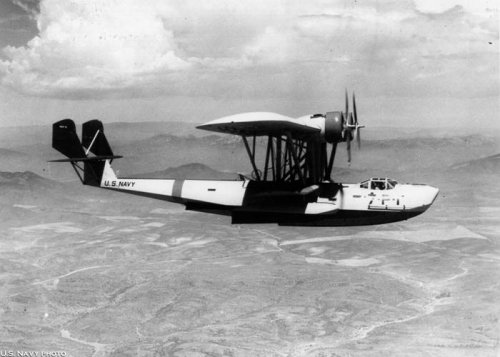
Consolidated P2Y, the predecessor of the PBY. It first flew in 1929, and 78 were made, the last dedicated as school planes and retired in 1941. The base principles were found on the PBY.
Consolidated and Douglas delivered on time a single prototype each. Called XP3Y-1 and XP3D-1 they had quite numerous differences. The Douglas XP3D-1 was relatively compact, slightly ungainly with engines truncated over the main wing on supports rather than installed into the wing’s curve but this was a cantilever configuration, the wings started from the fuselage. The tail was about the same and engines had relatively similar panel. The cockpit was singulat as having a step-down glass towards the nose. On its side, the Consolidated XP3Y-1 was just an evolution of the XPY-1 which competed unsuccessfully earlier for the P3M contract, combined with the small production XP2Y authorized by the Navy. The Douglas showed good characteristics overall, but the Navy eventually chose Consolidated’s design, notably because of the projected cost per plane of just $90,000.
Design of the PBY
The XP3Y-1 design (internally called company Model 28) indeed differed as having, like the Sikorsky and previous company’s planes, a parasol wing, with external bracing struts. It was mounted on a single pylon over the fuselage. This configuration allowed better sustentation overall, raised the engines above seawater sprays as they were mounted on the wing’s leading edge, and cleared the way for observers. The wings’s wingtip stabilizing floats were in addition retractable in flight, which was the main innovation of the design. This reduced drag massively, as they fit inside cavities at the tip of the wings, forming their streamlined wingtips; This was not a US invention, as it was indeed licensed from Saunders-Roe, a partner of the company in the US. The two-step hull design was about the same as the P2Y, but roomier, and using a cantilever cruciform tail, and not a strut-braced twin tail as on the previous P2Y. This wade for a sturdier construction. Overall, the fuselage was also larger and roomier. After many tests, this had cleaner aerodynamics, giving it better performance, and in all-metal with a stressed-skin of aluminum sheet. That also was found superior to the more mixedbag assembly of the P2Y. The ailerons and wing trailing edges stayed framed in metal but covered with fabric. Another master ace of Consolidated Type 28 its power, procured by two 825 hp (615 kW) Pratt & Whitney R-1830-54 Twin Wasp radial engines. They were trusted engines, well able to allow the plane to take-off and stay aloft for much longer than previous models. less anemic than previous models, they allowed the plane to carry a larger crew and more gasoline, but still authorized some defensive armament, no less than four .30 in (7.6 mm) Browning AN/M2 machine guns installed in the nose turret and in both side observation niches. It also had up to 2,000 lb (910 kg) of bombs attached under the wings.
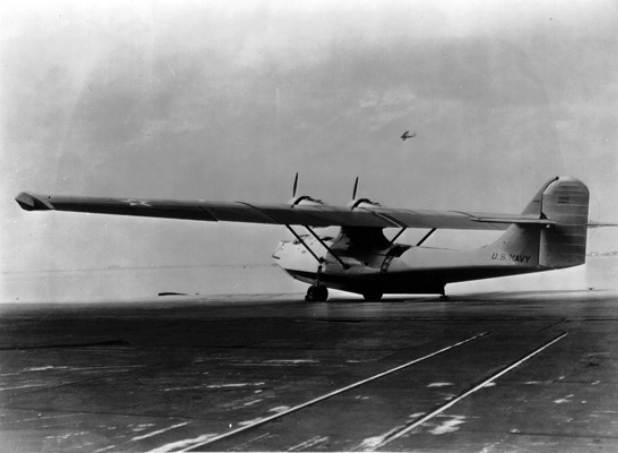
The prototype XP3Y-1 NAN7-61 in 1936
From the XPBY-1 to the PBY-1
The XP3Y-1 made its maiden flight for the company on 28 March 1935, and it was transferred U.S. Navy for service trials. The USN appreciated the performance improvement but requested further development to reach their desired new class of patrol bomber. By October 1935, the XP3Y-1 was returned to Consolidated. First, engineers mounted as requested more powerful engines, the 900 hp (670 kW) R-1830-64 models from P&W. It was redesignated XPBY-1 and its vertical tail was redesigned, notably to avoid the latter to be submerged on takeoff. The new XPBY-1 flew the first time on 19 May 1936, establishing afterwards a record non-stop distance flight at the time, of 3,443 mi (2,992 nmi; 5,541 km). It was delivered to the USN for operational testings, joining VP-11F in October 1936. VP-12 was the second squadron to receive the first pre-production run models, in early 1937. The USN read the reports which were good, and in between had already ordered a second production run on 25 July 1936.
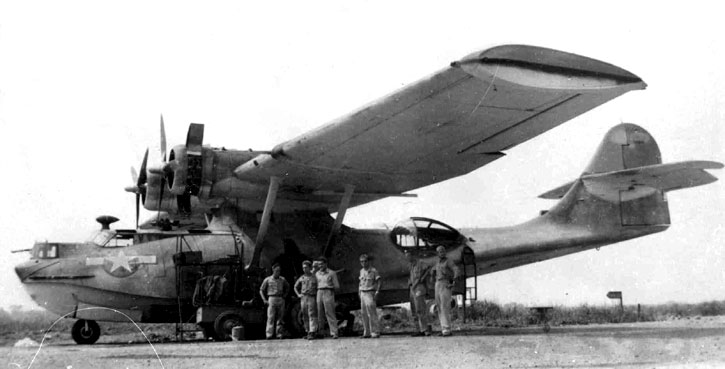
Catalina OA-10 used by USAF
About the name:
The official navy ordnance designation “PBY” was a product of the 1922 USN aircraft designation system. “PB” translated as “Patrol Bomber”, Y was the Consolidated Aircraft Manufacturer code. Canadian Vickers planed were designated “PBV”, Boeing Canada “PB2B” and Naval Aircraft Factory “PBN”. The British Commonwealth also had their own designation, giving their own flying boats after coastal port towns. The RAF maintained “Catalina”, but the RCAF (Royal Canadian Air Force) called it the “Canso” from the namesake town in Nova Scotia. The U.S. Navy was last to adopt the name of “Catalina” in 1942 but the USAF called it OA-10. The name came from the Santa Catalina Island, California, coined in November 1941, when Great Britain ordered 30 aircraft. Consolidated, base din San Diego, was not far away from the island indeed.
Design
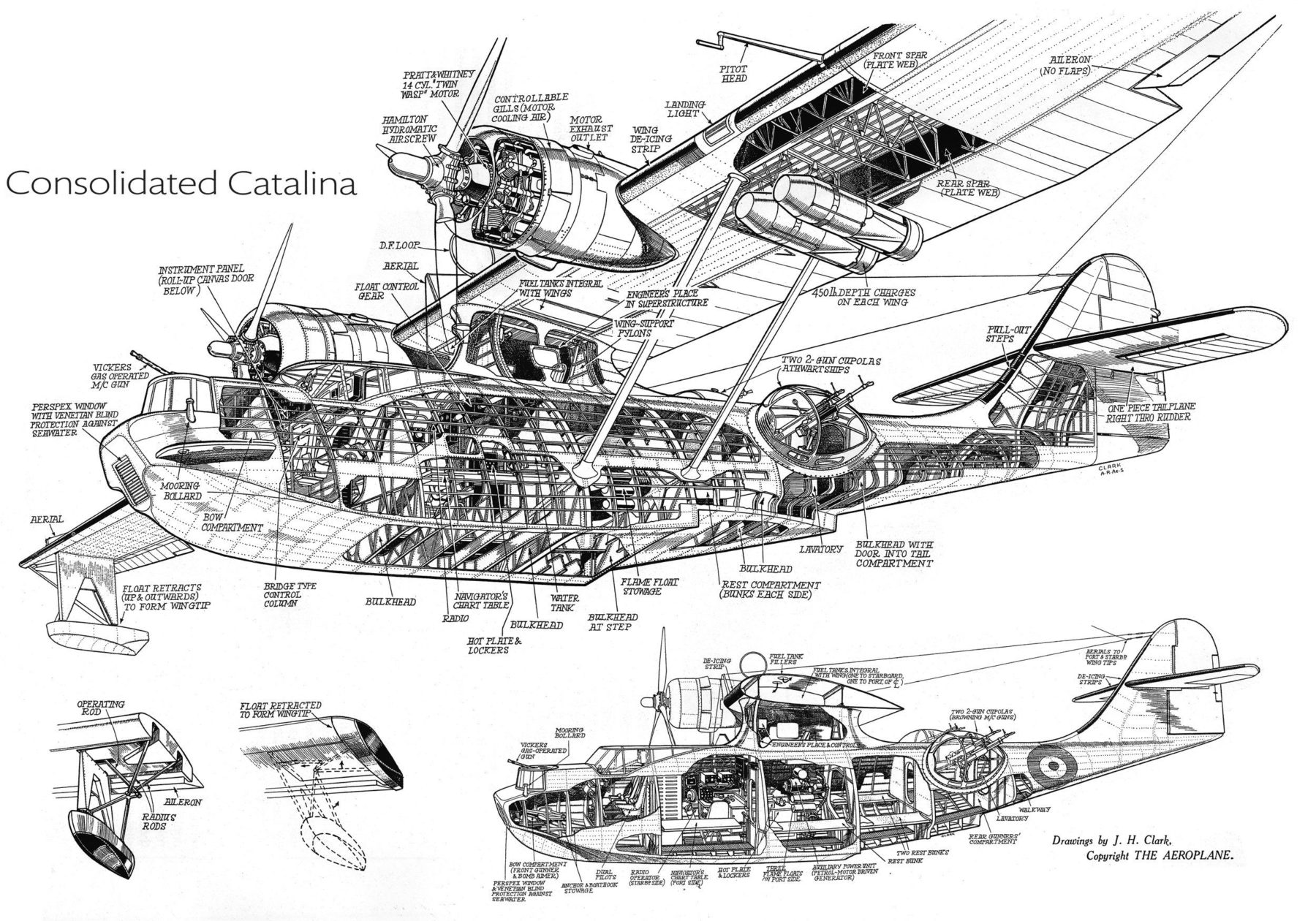
Large cutaway showing the interior of the PBY and location of all sub-systems. Old J.H. Clarke drawing from “The Aeroplane” magazine – src: http://www.seawings.co.uk via pinterest
See also (Atlas Editions)
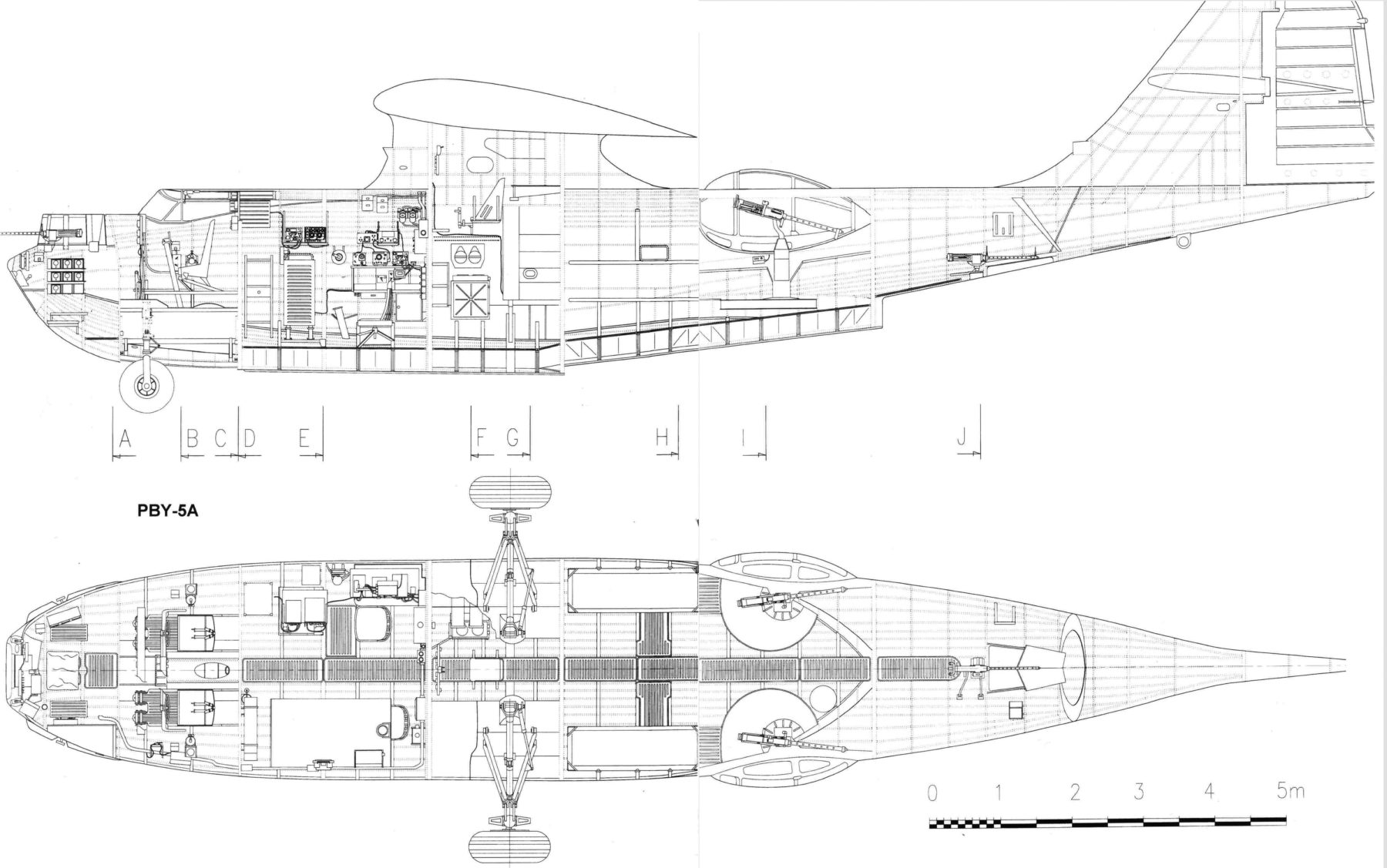
Large interior cutout plan, src drawingdatabase.com
The PBY was a “flying boat”, meaning it was meant to take off and land at sea, first and foremost; It was not a converted plane equipped with float (seaplane/float plane). Its hull was shaped as as a boat hull, complete with a bow, fuselage wave deflectors, electric windshield brooms and heater for removing water from the cockpit glass when taking off in splashes, and a boat-like tail end under the fuselage. Like many flying boats of the era, the PBY had a wing mounted high up, connected to the fuselage by a large central pylon and supported by two large struts on either side. There was no bracing. The tail was rounded, and made higher after a design revision, and modified also in later variants. It had a cantilever cruciform arrangement, as the aileron were placed relatively high, to compensate for the position of the main wings. The wings’s ends contained the foldable floats, electrically deployed.
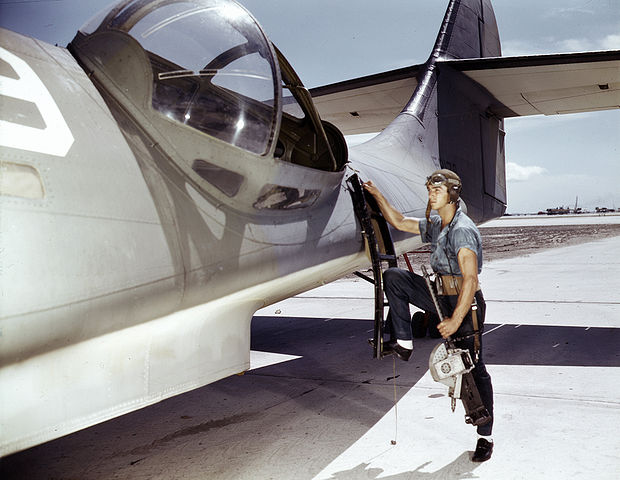
The PBY’s most defining feature were its two side gun blisters. They had both purposes: Providing an excellent observation point first, and provide additional defense point on either side as well. Made in plexiglas, it could become very hot when the planes were idle, anchored at sea level. Fortunately, the large aft window part of the blister was absent to allow side firing and the gunner to access and exit the place, using a ladder affixed in a dedicated location. There was a railing to mount two cal.50 Machine guns, port and starboard, but the M1919A4 was also often used. There was also a radio compartment located in the central pillar under the main wings. The PBY was designed as amphibious, fitted with two large wheels located at the bottom flanks under the wings, deployed by using a hydraulic main gear. There was also a tail wheel, located under traps underbelly just before the tail. In its final configuration, the PBY had a crew of 9-10: Typically, a pilot and a co-pilot, a bow turret gunner, a flight engineer, a radio operator, a navigator, a radar operator, two waist gunners and a ventral gunner. One of the waist gunners was often formed as a mechanic as well to assist the flight engineer. The PBY was the first USN place with a permanent flight engineer/mechanic on board wit his working station.
Power & performances
The final main production version was given two Pratt & Whitney R-1830-92 Twin Wasp 14-cylinder air-cooled radial piston engines, which delivered 1,200 hp (890 kW) each, 2,400 total. This was for a total weight of 20 to 35,420 lb (16,066 kg). The 10 tonnes Hellcat fighter had the same power in 1944. These engines had 3-bladed constant-speed propellers. Due to the very large production there were more powerful engines (see variants).
The Power to mass ratio was 0.067 hp/lb (0.110 kW/kg), and their large (1,400 sq ft, 130 m2, for a drag erea of 43.26 ft2 (4.02 m2)) wing area provided a reduced wing loading of 25.3 lb/sq ft (124 kg/m2).
The main focus was range, not speed. These Catalina were slow burners, capable of a top speed fo 196 mph (315 km/h, 170 kn), a cruise speed of 125 mph (201 km/h, 109 kn) over a range of 2,520 mi (4,060 km, 2,190 nmi). They could climb up to 15,800 ft (4,800 m), at a rate of 1,000 ft/min (5.1 m/s).
Armament
This too, was also not their main concern, although the design contract precised these planes were to be used as along range Pacific bombers as well. Defensive armament was certainly not to the scale of the B17 Flying fortress, but good enough to put a fight, and the planes were stable and sturdy as well, surviving with man bullet holes. They generally carried three .30 cal (7.62 mm) Browning M1919A4 machine guns, a fual mount in the nose turret and one in the ventral hatch close to the tail, only there to cover the “dead angle”. The sides were covered by two .50 cal (12.7 mm) M2hB machine guns, in each waist blister, on pintles. The payload was carried under wing, and the total could represent 4,000 lb (1,814 kg) of bombs or depth charges (four 454 kgs -1000 ibs General-Purpose Bomb for example) torpedo racks were also available, although these were the standard 457 mm aerial model, and were rarely seen on photos.
The PBY in action
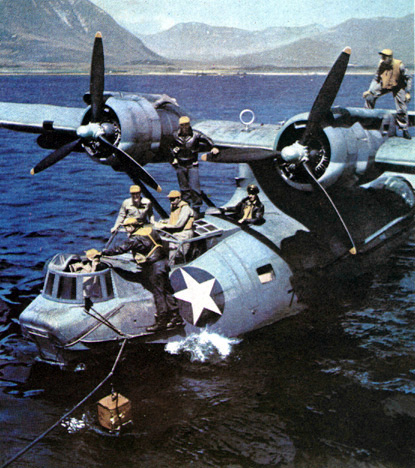
The PBY was the most produced and common flying boat of WW2, totalling 3,300 aircraft built, and was used for more roles for it was planned initially, mainly in anti-submarine warfare, but also as planned patrol bombing and convoy escort, but also search and rescue missions (SAR) and were nicknamed “Cat” on combat missions and “Dumbo” in air-sea rescue service, or cargo/staff transport. Its internal space was roomy to accommodate 5-6 passengers. The Catalina served on all theaters of WW2, from the warm waters of the Mediterranean and south Pacific, to the Atlantic, and cold of the cape north, the Aleutians or Russia. It served with distinction and played a prominent, invaluable role notably in the Pacific against the Japanese.
With time, land-based bombers used for maritime patrols started to replace the Catalina in this role, as well as the longer range, larger
Consolidated LB-30 and Coronado, notably to replace them for the logistic strategic air lift in the Pacific and the Catalina kept the role of advanced reconnaissance plane for the US and Royal Navy fleets, with a range far greater for lighter land-based recce planes or carrier-based planes. In its recce role, a British RNAS Catalina (piloted by an American) located the Bismarck after she successfully evaded the British ships shadowing her, allowing to catch her before she reached the safety of French waters. Catalinas were deployed in the vicinity of Pearl Harbour, but were too few to cover an immense area and missed the Kido Butai.
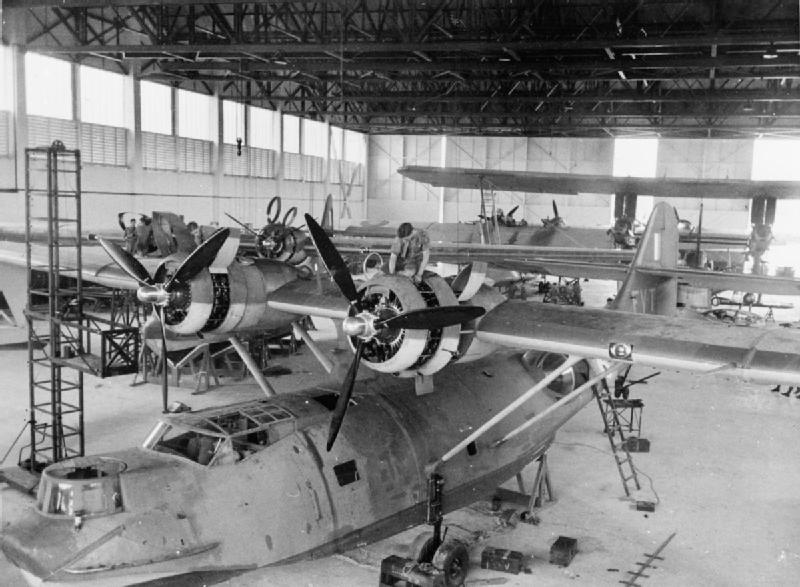
PBY’s of 205 RAF-RNAS Squadron in Singapore, 1941
ASW role
Although it was not a specialty as planned initially, the Catalina gained during the battle of the Atlantic a fantastic reputation as sub-killer. The “angel of death” constantly patrolling above the long convoys, searching for the ominous dark grey shape visible by clear weather at 10-15 meter deep underwater. The shape of an U-Boat. This is one of the reasons Wolfpacks preferred to attack by night on surface. There was no air cover, and the low visibility allowed them to penetrate the convoy “box” on surface at max speed. Both the Catalina and Sunderland became very instrumental in ASW patrols, but could attack as well. Sometimes they carried a combination of bombs and depth charges, but it was rare to catch an U-Boat on surface. They could be heard coming and were quick to dive before the Catalina was on them. However the depht charges did not needed to dive for long, and the Catalina had the advantage of seeing the submarines after their dive.
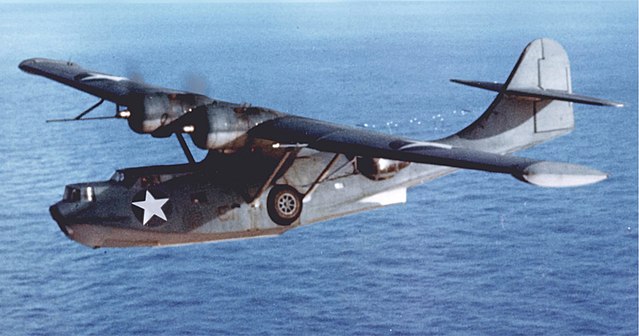
Catalinas was used in this role both in the Atlantic, north and south, and Pacific but also the Indian Ocean, from the Seychelles or Ceylon, both important ASW flying plane bases. They were also used over convoys bound to Murmansk, braving the extreme cold and bad weather. By 1943, U-boats realized their threat and were packed with anti-aircraft guns. Two Victoria Crosses were won by Catalina pilots badly damaging on sinking U-Boats while under heavy fire like John Cruickshank (RAF) for U-347 and David Hornell RCAF on U-1225. In all, Catalinas destroyed 40 U-boats but took losses as well. A special class of U-Boat, used for FLAK was added organically to wolfpacks. The Brazilian also participated in the battle of the Atlantic and used Catalinas, one sinking U-199 in Brazilian waters on 31 July 1943.
Maritime patrol
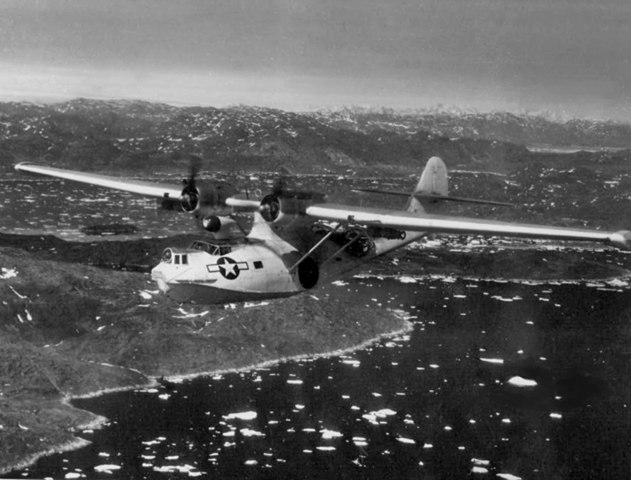
The Catalinas were also good at long range reconnaissance. Key to their success in their their role was their parasol wing and large waist blisters which both provided excellent visibility. Long range and reliable engine also ensured they were long and often in the air, what it mattered. The RAF made great use of them over the Atlantic as the production of flying boat never was sufficient to cover the needs of the RNAS. RAF Coastal Command flying boat, piloted by Ensign Leonard B. Smith (U.S. Navy) that flew from Castle Archdale Flying boat base in Northern Ireland, located the German battleship Bismarck, which proved instrumental to finish off the mighty battleship before she reached the safety of French waters. In all, the British “cats” sunk at least 48 confirmed U-Boats during the battle of the Atlantic.
Also on 7 December 1941, the Japanese landings on Kota Bharu in Malaya were spotted by a Catalina from No. 205 Squadron RAF. It was shot down before radio reporting the fleet by five Nakajima Ki-27 fighters and Flying Officer Patrick Bedell and his crew became the first Allied casualties in the war with Japan. Catalinas were also at the origin of the success at Midway, spotting the Japanese fleet approaching the Island at the start of the Battle. The vital intel provided by the “Cats” one day before the battle was one crucial element counting for the win on the US side. Later, one of these PBYs scored …the only successful torpedo hit of the battle, with the oiler IJN Akebono Maru.
A “Canso” from the RCAF (Squadron Leader L.J. Birchall) also detected a Japanese carrier fleet approaching Sri Lanka in the Indian Ocean fleet on 4 April 1942, allowing the allies to organize their defence. In rare occasions, one such flight was enough to foil plans as destroying surprise.
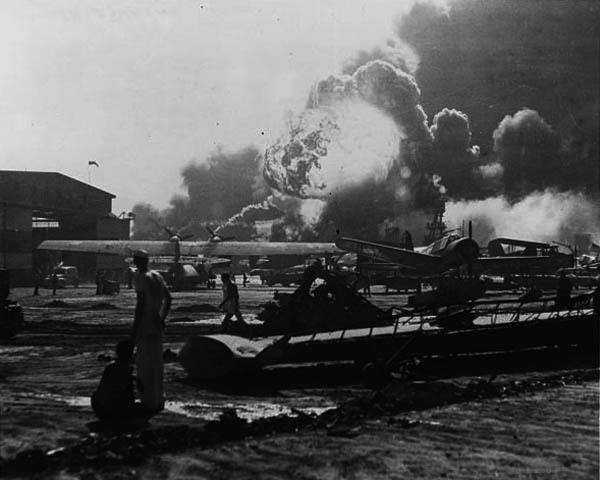
Pearl Harbor attack: A Catalina PBY can be seen in the background. These planes payed a heavy price that day, and on the 81 in service there at Oahu -some since 1936, only eight survived (seven already in flight when it happened, searching for the Japanese fleet). Given suhch statistics, it was deduced they were targeted specifically by IJN pilots after Yamamoto’s instructions, knowing the great threat they posed as the “eyes” of the USN fleet. It’s also one of these PBY’s that first spotted one of the attacking midget subs. The flying boat attacked it before leaving hand to the USS Ward which finished her off. It was the first USN air action in WW2, not counting the numerous attacks performed with British catalinas in the Atlantic, often with US pilots (such as the one that spotted the Bismarck). Not long after during the January Philippines evacuations, one such PBY’s turret gunner shot down a Japanese fighter, perhaps the very first japanese air to air kill of this war. Only three weeks after Pearl harbour, the USN launched their first air raid, six “Cats” (the only ones with the range) at Jolol island in a bombing mission, SW of the Philippines. Without training or previous experience on this, they came at 12,000 feets, and attacked the IJN fleet at dawn, equipped with Norden bomb sights. The latter were only good for large, fixed targets so some pilots tried dive bombing… and in the end scored two near-misses. While four of the PBYs never returned, lessons were learned and low altitude attacks became a preferred tactic from then on, despite the obvious risk it represented. It became the staple of the “black cats” actions during the early phase of the war in the Pacific.
This was on 10 December 1941, when IJN Ashigara (Nachi class) was in a holding position in the South China Sea, circa 200 miles (320 km) NW of Manila Bay. There too, were IJN Maya, Kuma, and the destroyers Ikazuchi and Inazuma, under command of Admiral Takahashi, which also headed the Philippine Invasion Force. She was spotted by U. S. Navy air patrols which came from Luzon and soon, the a single PBY-4 Catalina from VP 102, Patrol Wing TEN, located the fleet and repoted their position. Soon, Five of the wing took off from from NAS Sangley Point (Manila Bay) under command of Lieutenant Commander J. V. Peterson. They attacked at noon, dropping together twenty 500 lb demolition bombs in a tight pattern, from 13,500 feet. Splashes were clustered astern of IJN Ashigara, and two hits reported; Since AA fire was heavy, no confirmation could be given and all withdrew while a PBY sustained minor damage. The two heavy cruisers were identified as battleships back then andthe unit reported Kong has been hit. There were two follow-up strikes but they could not locate them;
Night maritime patrol
The famous “Black Cats” of the pacific were named that way for a reason: They were painted black to ensure night patrols (at first improvized paint with soap and oil burning lamp residues) and mechanics improvized flame suppressor devices on the exhausts. At Midway already, four PBYs of Patrol Squadrons 24 and 51 performed a night torpedo attack on the nearby fleet on the night of June 3–4, 1942. One scored a hit, badly damaging the fleet oiler Akebono Maru. This was the only successful USN aerial torpedo attack of the entire battle of Midway.
Due to the defensive nature of the war, “Cats” pilots often learned how to stay in the ckpuds as much as possible during their transit to a search area or transport mission, and by night all lights shut. They were resilient in case of attack, but stood little chance due to their large size, poor agility and slow speed. Hiding was also a matter of organization: To avoid grouping these planes in large, fixed flying boat bases, the PBYs used to be supplied as much as possible with dedicated seaplane tenders, depot and supply ships, many being former converted “four-pipers”.
The Black Cats of Guadalcanal
The one and a half year long Guadalcanal campaign saw USN PBYs painted matte black for the first time, specialized for night bombing and carrying torpedoes, even be used as “gunships” in strafing missions, against Japanese supply fleets, notably the infamous “Tokyo Express”, always operating by night. They multiplied interdiction raids and accumulated success, proving an hinderance to the Japanese in this area. In December 1942 VP-12, was the first “black cats” squadron, followed by thirteen more. They were flying slowly almost to ship’s mast height, in order to avoid radar and visual detection. They sank and damaged 6,000 to 8,000 tonnes per plane, per month on average (as cited in a documentary of the time, alltogether 41,000 tonnes, also damaging 43,000 tonnes) as well as devastating land-based Japanese installations, in addition to their usual recce and SAR duties. When attacking, it was always with bombs, rarely with torpedoes. One veteran pilot affirmed his squadron alone sunk an damaged a cumulated 200,000 tonnes of Japanese shipping, and fourteen squadrons of “Black Cats” operated in the same area.
The “Black Cats” received the PB4Y-2 from early 1944 and were disbanded by mid-1945.
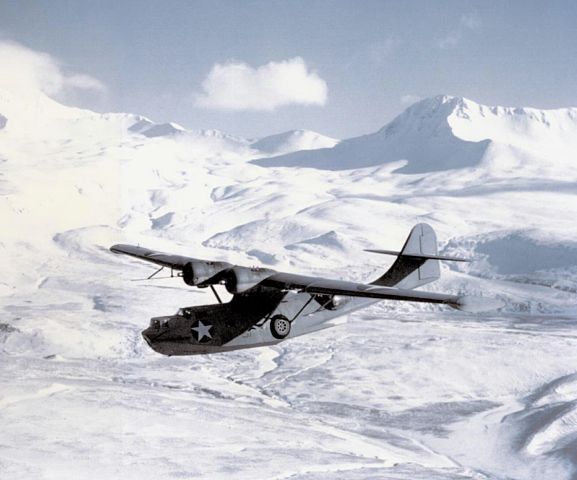
PBY-5A of VP-61 over the Aleutians in March 1943
RAAF’s Catalinas
The Royal Australian Air Force also used their Catalinas was night raiders, with the Squadron 11, 20, 42, and 43. They started with minelaying missions laying by 23 April 1943 until the end of the war and concentrated their area of operations at first in the southwest Pacific, but they operated deep in enemy controlled areas. They excelled at mining ports and shipping routes. IJN convoys were condemned to take on the open sea, now easy meat for USN submarines. Their action was sensitive in particular at Balikpapan, home of about 80% of the oil supplies consumed by the IJN. From late late 1944, these missions, with prepositioned supply vessels, could last 20 hours, and like the Black Cats they flew very low, around 200 ft (61 m), which was excessively dangerous in some hilly volcanous archipelagos. Their minefields also trapped IJN vessels inside Manila Bay, ensuring no supplies would come from there during General Douglas MacArthur’s landing at Mindoro. They also mined Jinamoc in the Leyte Gulf, and along the Chinese coast, from Hong Kong to Wenchow. They also were proficient in night bombing raids, and RAAF “black cats” crews were proud of their motto “The First and the Furthest”. They repeatedly bombed Rabaul, using “terror bombs” replacing traditional bomb loads with scrap metal, rocks, beer bottles with razor blades, not only producing screaming noises but also deadly shrapnells, keeping the Japanese awake. Thanks to their long range, one of the major base was Drimmie Head, Gove Peninsula in the Australian Northern Territory.
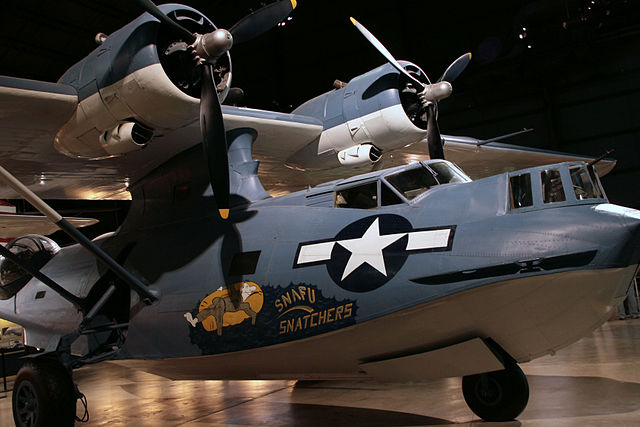
Catalina preserved in a USAF museum used for SAR “Snafu Snatchers”
The angels of Mercy
As true the Black Cats were hatred by the Japanese, they were beloved by every sailors which ship was sunk n the middle of the Atlantic or aviator stranded on a forgotten island in the pacific. The U.S. military used the Catalina first as their main rescue aircraft. Some achieved good results, like LCDR Adrian Marks (USN) PBY which score was of 56 sailors, all from the heavy cruiser USS Indianapolis in 1945, saved from sharks. As room was lacking inside, they climbed on the wing, and the PBY housed and protected them from shark attack until rescue ships arrived. This SAR role went on for many years after the end of WW2 and the Catalina proved very popular in civilian service, commercial air travel, exploration, fire fighting, inter-island supply, and some are still flying today, preserved and maintained with a well-deserved love. Afte the war they were considered surplus and sold to many navies around the world, seeing service until the 1970s and sometimes well beyond, proving their extraordinary resilient design. In some way they were the flying boat equivalent of the DC-3 Dakota…
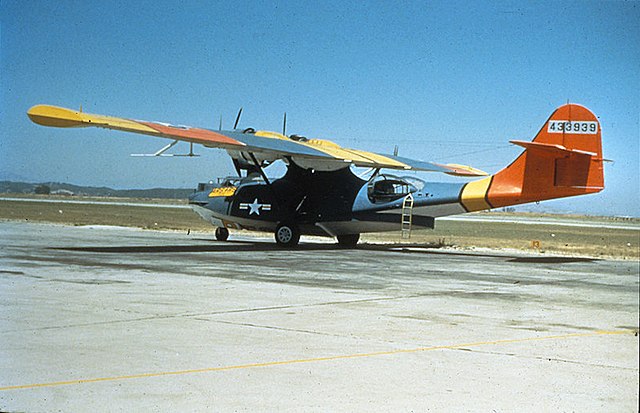
Canadian Vickers SA-10A Catalina
Variants, exports, and post-war use
Production and variants:
Back-and forth remarks between Consolidated led to many design developments and no less than 16 variants, including the very different PB-1 Nomad from the Naval Aircraft Factory, which became a new model of its own.
-XPBY-1: Prototype version (Model 28) made for the contact comparative tests of the USN
-XP3Y-1: Same but with two 900 hp R-1830-64 engines as requested for pre-production.
-PBY-1: (Factory Model 28-1): Initial production, two 900 hp R-1830-64 engines (60 built)
-PBY-2: (Factory Model 28-2), small chages in equipments and improved engines (50 built)
-PBY-3: (Factory Model 28-3), re-engined with two 1,000 hp R-1830-66 engines (66 built)
-PBY-4: (Factory Model 28-4), re-engined with two 1,050 hp R-1830-72 engines (33 built, including the XPBY-4/XPBY-5A).
-PBY-5: (Factory Model 28-5): 1,200 hp R-1830-82/92 engines, extra self-sealing fuel tanks (683 built)
Also used by the FAA/RAD as Catalina IVA, US Coast Guard and Soviet GST.
-XPBY-5A: PBY-4 pure amphibian, first flew in November 1939.
-PBY-5A (Factory Model 28-5A): Pure Amphibious version, two 1,200 hp R-1830-92 engines. 124 with 0.3in bow gun, the others with two (803 total).
-PBY-5R: Staff transport, with amphibious gear, no nose turret, additional windows.
-PBY-6A: Pure Amphibious, two 1,200 hp R-1830-92 engines, taller fin and rudder, radar scanner above cockpit, 2x 0.5 in nose guns (175 built, 21 for USSR)
-PBY-6AG: Single Staff transport for the US Coast Guard.
-PB2B-1: Manufactured by Boeing Canada 1942 for the RAF and RCAF (240 built)
-PB2B-2: Boeing Canada built version of the PBY-5 but with the taller fin of the PBN-1. 67 built. Most supplied to the RAF as the Catalina VI.
-PBN-1 Nomad: Naval Aircraft Factory versions with a 2ft bow extension, new hull lines, modified step, new wingtip floats, tail surfaces, revised electrical system.
All lend lease: 155 RAF Catalina V + 138 Soviet Navy (KM-1).
-PBV-1A/Canso A Canadian Vickers PBY-5A version 1943-44 (380 RCAF, 150 for RCAF, rest for USAF OA-10A)
-OA-10/10A/10B: USAF designation respectively for the PBY-5A (105), PBV-1A (230) and PBY-6A (75).
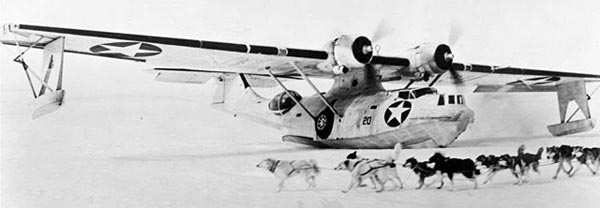
Bernt Balchen’s Consolidated PBY with dog sled in Greenland, 1943
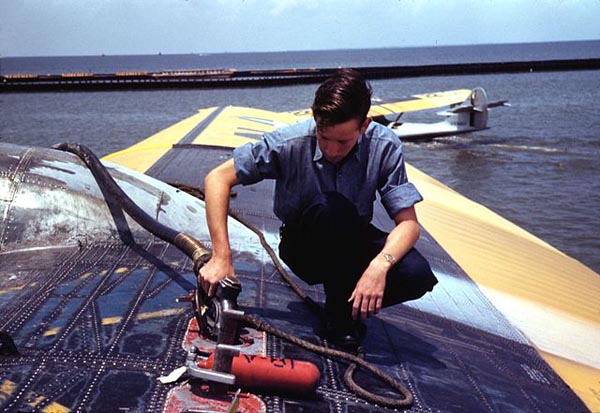
A sailor mechanic refueling a plane at the Naval Air Base Corpus Christi
The British Commonwealth Catalina Mark I to Mark VI
After the US, Great Britain was the largest user of the PBY, locally named “Catalina”, but not produced at home. Some were Canadian-built by the majority was US-Built. Total 771, some with RCAF and RAAF.
Catalina Mark I: PBY-5 (six 0.303 in guns, bow, waist blisters, hull step aft) 1,200 hp R-1830-S1C3-G engines (109)
Catalina Mark IA: RCAF “Canso” (14)
Catalina Mark IB: PBY-5Bs (225)
Catalina Mark II: Some Equipment changes (6)
Catalina IIA: Made by Vickers-Canada (5)
Catalina IIIA: Former PBY-5As (12)
Catalina IVA: PBY-5s (93)
Catalina IVB: PB2B-1s, a few with the RAAF (240)
Catalina VI: PB2B-2s RAF and RAAF (67)
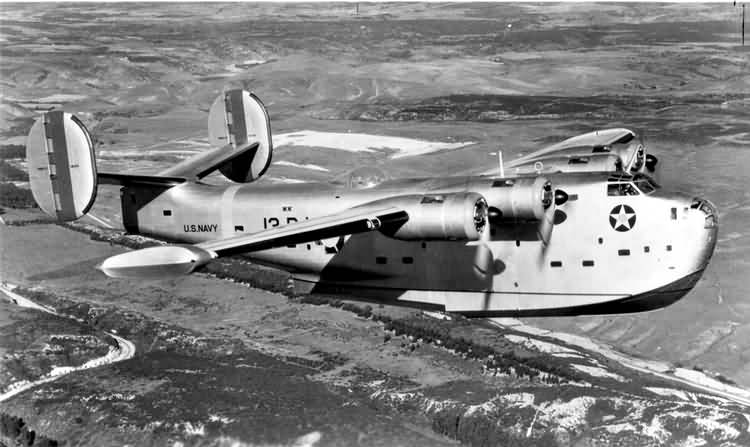
The Consolidated Coronado, planned successor of the Catalina. Despite its more ambitious conception, it never was as popular. Entering service in 1942, only 217 were ever made.
They were all quickly scrapped in 1946-47. Reasons were multiple, but first, the heavier Coronado had an inferior range and could no stay aloft as much, so basically the “Cat” was more fuel-efficient, adding to having only two engines instead of four. Also, the cost. A coronado costed as much as three Catalinas, and it was also three times more expensive to maintain, wheras scale production had made the Catalina unit cost far lower.
The company also made a prototype of the Consolidated XP4Y Corregidor, never adopted, nor the projected Consolidated XPB3Y. The company was busy with the famous Liberator heavy bomber and its numerous derivatives. The Navy appreciated the range, speed and armament of the Consolidated PB4Y-2 Privateer in the Pacific.
The Catalina was used by the following *(PW) is postwar: Argentina (PW), Australia, Brazil, Canada, Chile (PW), China, Colombia (PW), Cuba (PW), Denmark, Dominican Republic (PW), Ecuador (PW), France, Iceland (PW), Israel (PW), Japan (PW), Mexico (PW), Netherlands, New Zealand, Nicaragua (PW), Norway, Paraguay (PW), Peru (PW), Philippines (PW), South Africa, Spain (PW), Sweden (PW), Soviet Union, United Kingdom, United States, Uruguay (PW). Civilian operators: Australia, Brazil, Canada, Colombia, Republic of China, France, Hong Kong, Indonesia, New Zealand, Paraguay, Philippines, Venezuela, United Kingdom, United States, etc.
Very popular in their SAR role, USN Catalinas were active until 1957, the Coast Guards used them a bit longer, and the Brazilian Naval Ar force retained theirs until 1982.
PBY-5 Specifications |
|
| Dimensions: | Length: 63 ft 10 in (19.47 m) Wingspan: 104 ft (32 m) Height: 21 ft 1 in (6.43 m) Wing area: 1,400 sq ft (130 m2) |
| Weights: | Empty weight: 20,910 lb (9,485 kg) Max takeoff weight: 35,420 lb (16,066 kg) |
| Crew: | 10: Pilot, copilot, mechanic, 4 Gunners, navigator, 2 operators |
| Propulsion: | 2 Pratt & Whitney R-1830-92 Twin Wasp 14-cyl. AC radial engines 1,200 hp (890 kW) |
| Fuel cap.: | 370 US gal (310 imp gal; 1,400 L) internal fuel |
| Propeller: | 3-blades constant-speed CS propeller |
| Top speed: | 196 mph (315 km/h, 170 kn) |
| Cruise speed: | 125 mph (201 km/h, 109 kn) |
| Service ceiling: | 15,800 ft (4,800 m), ROC: 1,000 ft/min (5.1 m/s) |
| Range | 2,520 mi (4,060 km, 2,190 nmi) |
| Armament | -3 x .30 cal (7.62 mm) machine guns (2 nose turret, 1 ventral hatch) -2 x .50 cal (12.7 mm) machine guns (waist blisters) -4,000 lb (1,814 kg) of bombs, depth charges, torpedo racks under wings |
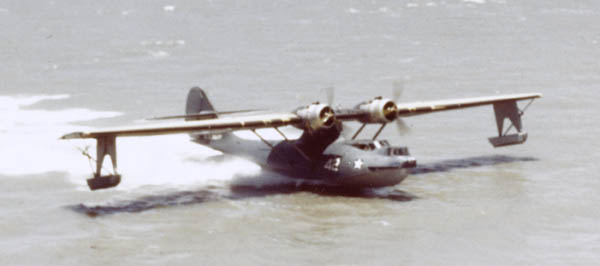
A Consolidated PBY-3 Catalina landing, circa 1942
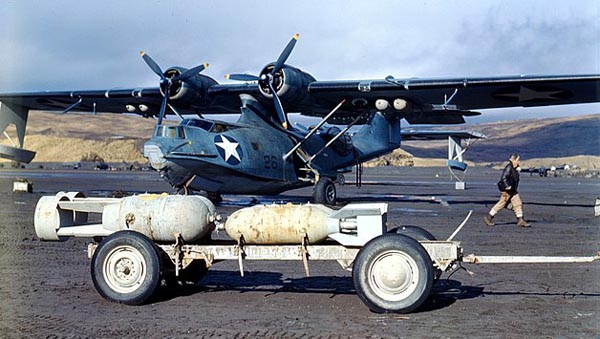
Consolidated PBY-5A Catalina is armed at Adak (Aleutians) in 1943
Read More/Src
http://www.pbyrescue.com/
https://www.navalaviationmuseum.org/history-up-close/aircraft-in-spotlight/pby-cutaway/
https://catalinaaircrafttrust.com/
AN 01-5M-3 Handbook of Structural Repair for Navy Models PBY-5, PBY-5A, PBY-6A Army Model OA-10 Airplanes, 1945 (PDF)
en.wikipedia.org/wiki/List_of_seaplanes_and_amphibious_aircraft
en.wikipedia.org/wiki/Consolidated_PBY_Catalina
Also: Google books on the PBY
Books:
Bridgeman, Leonard. “The Consolidated Vultee Model 28 Catalina.” Jane’s Fighting Aircraft of World War II. London: Studio, 1946.
Cacutt, Len, ed. “PBY Catalina: Ocean Patroller.” Great Aircraft of the World. London: Marshall Cavendish, 1989.
Creed, Roscoe. PBY: The Catalina Flying Boat. Annapolis, Maryland: US Naval Institute Press, 1986.
Crocker, Mel. Black Cats and Dumbos: WW II’s Fighting PBYs. Huntington Beach, California: Crocker Media Expressions, 2002.
Dorny, Louis B. US Navy PBY Catalina Units of the Pacific War. Botley, Oxford, UK: Osprey Publishing, 2007.
Freeman, Elmer (1984). Those Navy Guys and Their PBY’s: The Aleutian Solution. Spokane, Wash.: Kedging Publishing Co.
Gaunt, Coral and Robert Cleworth. Cats at War: Story of RAAF Catalinas in the Asia Pacific Theatre of War. Roseville, NSW Australia: J.R. Cleworth, 2000.
Greenhous, Brereton et al. The Crucible of War 1939–1945: The Official History of the Royal Canadian Air Force, Vol. III. Toronto: University of Toronto Press, 1994.
Gunston, Bill (1986). American Warplanes. New York: Crown Publishers Inc.
Hendrie, Andrew. Flying Cats: The Catalina Aircraft in World War II. Annapolis, Maryland: US Naval Institute Press, 1988.
Kinzey, Bert. PBY Catalina in Detail & Scale. Carrollton, Texas: Squadron/Signal Publications, Inc., 2000.
Knott, Richard C. Black Cat Raiders of World War II. Annapolis, Maryland: US Naval Institute Press, 2000.
Legg, David. Consolidated PBY Catalina: The Peacetime Record. Annapolis, Maryland: US Naval Institute Press, 2002.
Miller, Nathan (1997). War at Sea: A Naval History of World War II. New York: Oxford University Press.
Petrescu, FLorian Ion and Reilly Victoria Petrescu. The Aviation History. Stoughton, Wisconsin: Books on Demand, 2012.
Ragnarsson, Ragnar. US Navy PBY Catalina Units of the Atlantic War. Botley, Oxford, UK: Osprey Publishing, 2006.
Scarborough, William E. PBY Catalina in Action (Aircraft number 62). Carrollton, Texas: Squadron/Signal Publications, Inc., 1983.
Scarborough, William E. PBY Catalina: Walk Around. Carrollton, Texas: Squadron/Signal Publications, Inc., 1996.
Wagner, Ray. The Story of the PBY Catalina (Aero Biographies Volume 1). San Diego, California: Flight Classics, 1972.
Modeller’s corner

The old Atlantis kit, 1/104 scale
The PBY has been covered by Revell, Academy and Minicraft as well as Atlantic (old kit)
Modeller’s plan: https://outerzone.co.uk/plan_details.asp?ID=8213
Shop now
Video:
The most underrated WW2 US plane: The PBY Catalina by Greg’s Airplanes and Automobiles

PBY-1 at San Diego, VP-12, patrol wing 1, 1937. Note the dark blue underbelly

PBY-2 at NAS San Diego, VP-11, 1938. These had yellow top wings and the same silver finish

PBY-5A used in neutrality patrols, mid-Atlantic, March 1941. The neutrality red bands were removed after May 1942 from all planes and the red roundel in star cockade later as sometimes confounded with the Hinomaru. The camouflage was a mix of light and darker blue grey.

PBY-5 VP-34 Fleet Air Wing 17 in the Pacific. The plane was deployed to search for survivors of down planes after the raid on Truk, Operation Hailstone, 17–18 February 1944

PB-5Y VP-63 of Fleet Air Wing 15 in Port Lyautey, French Morocco, February 1944. Note this simplified production version had its wheeltrap welded shut. It was purely amphibian.

PBY-5A of VPB-63 Atlantic 1944 with a two-tone livery base don white also used by the fleet air arm.

PBY-5A of VP-54 “Black Cat” Guadalcanal 1944 with the eyeball turret and radome

PBY-5A assigned to ComAirSoPac on Espiritu Santo in the New Hebrides, which landed in August 1942 at Guadalcanal.

PBY-5 in the Pacific night patrols

PBY-5A Catalina of the USN at Midway, June 1942

Vickers-Canada Canso (PBY-5A) RCAF, 1943

PBY-5A Catalina of the RNAS, Western Approaches 1944

PBY-5A Catalina of the RNZN in 1944

RNAS Catalina Mark I from 209 Squadron, Lough Erne, May 1941. This plane located the German battleship Bismarck on the morning of 26 May.

Catalina IVA of the Free Norwegian Naval Air Service

Catalina IV “D for Dagwood”, N°11 Sqn Fleet Air Arm

Catalina Mk.IVA of 302 Squadron Fleet Air Arm
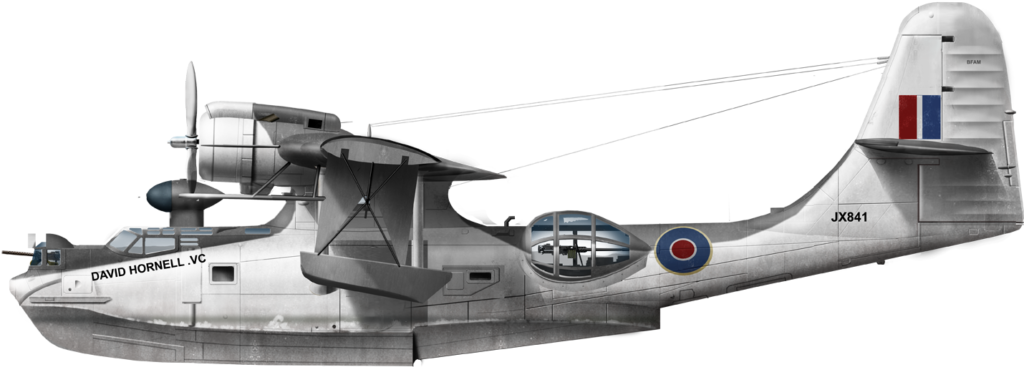
Catalina Mk.VIA (PBY-6A) “David Hornell VC” in 1945
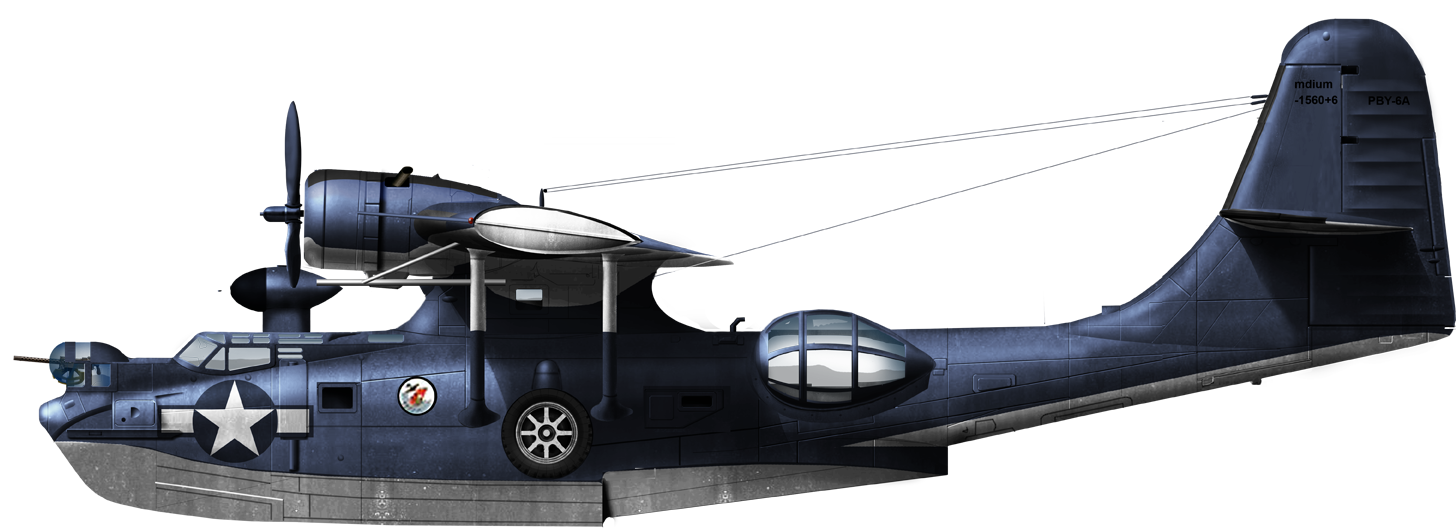
Consolidated-Vultee PBY-6
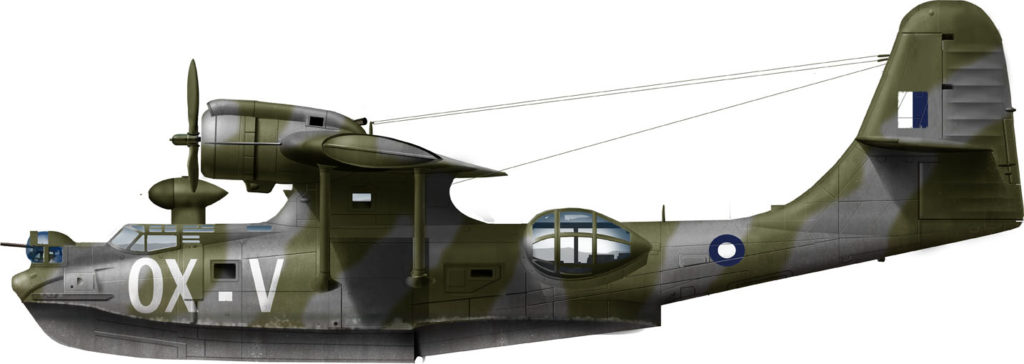
Consolidated PBY 6A Catalina of the RAAF

Catalina MkIV.A of Sqn202 in Lough Erne, 1942
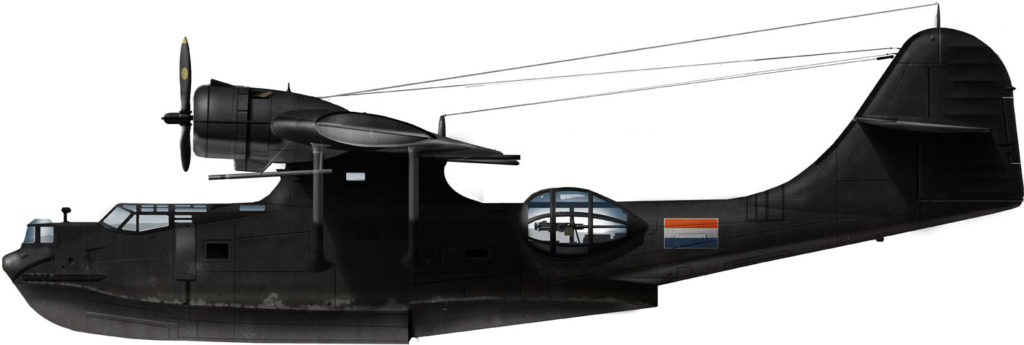
Catalina Mark VIA in Dutch service, 1945

PBY Catalina of the Dutch KNIL in 1945

PBY-5A Catalina of the RAAF “blackcat”, south pacific 1943

PBY-5A of the RAAF in 1943
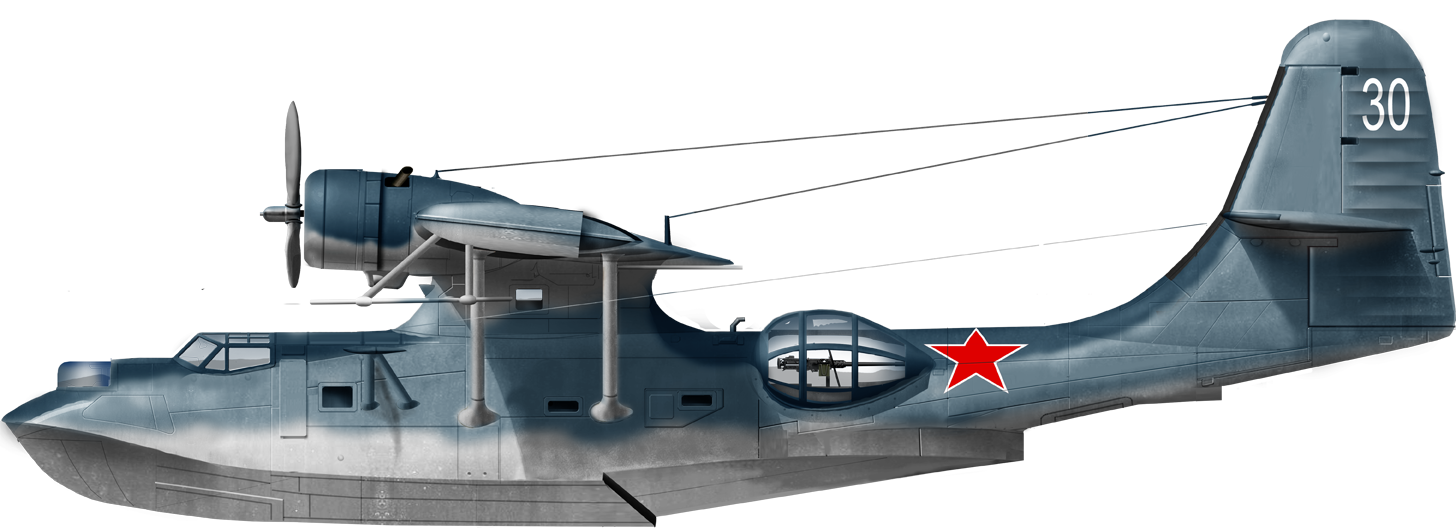
PBN-1 Nomad, a tailored version made in the US for the USSR, delivered in 1944-45. This one was delivered from NAS Kodiak, September 1944. In Soviet service they were called GST for “Gydro Samoliot Transportnyi” and built in USSR.
Cold War

Canadian vickers OA-10 USN Rescue squadron 1947
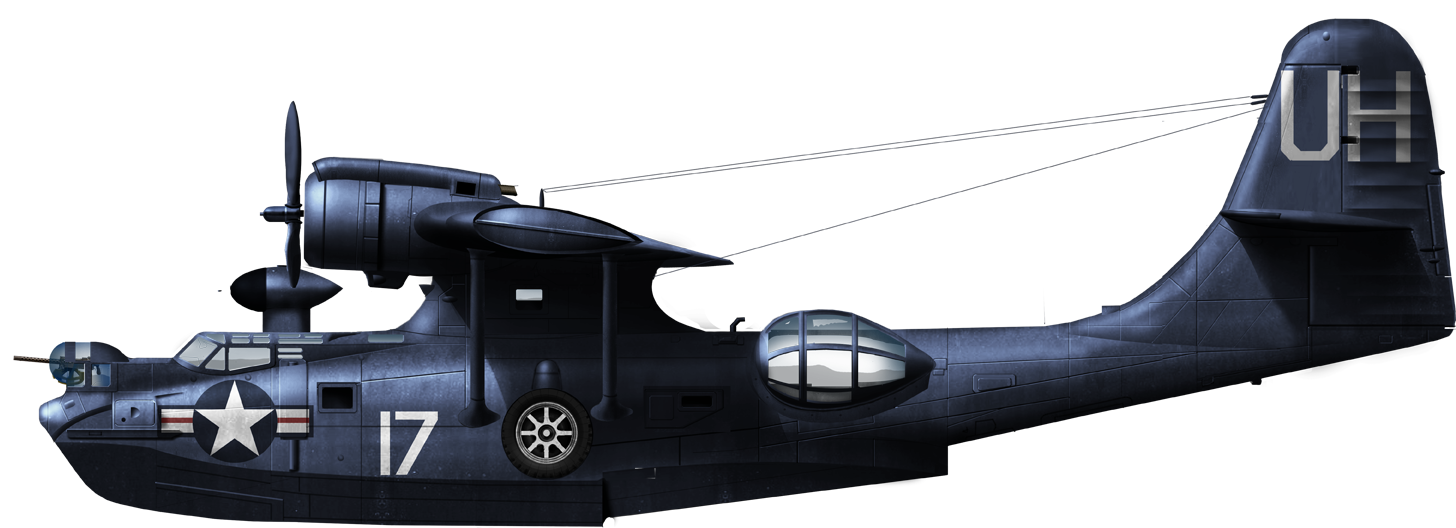
PBY-6A NAS n°17, VU-7 San Diego in February 1948
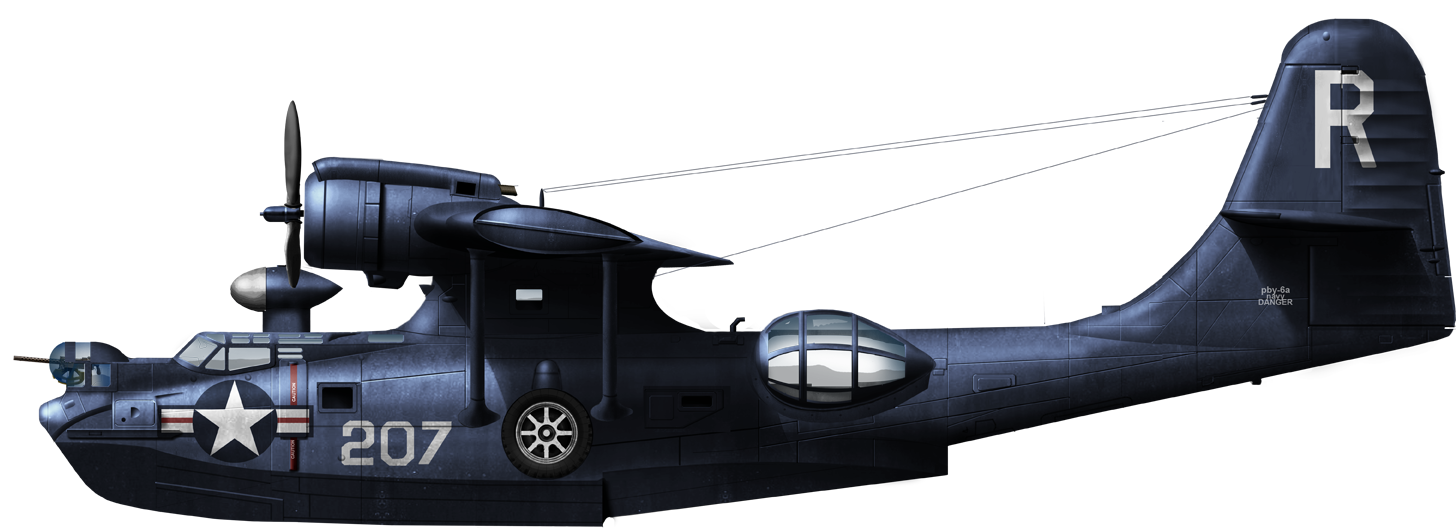
PBY-6A NAS New York 1949

PBY-5A Catalina of the MarineLuchvaart Dienst in 1948



PBY-5/5A and 6 in service with the Argentine Navy 1948-1960

PBY-5 Catalina French 4F flotilla 1950
Photos
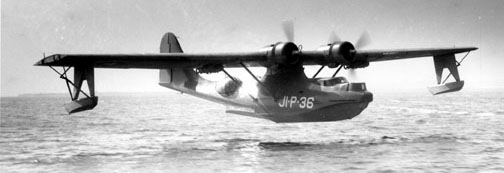
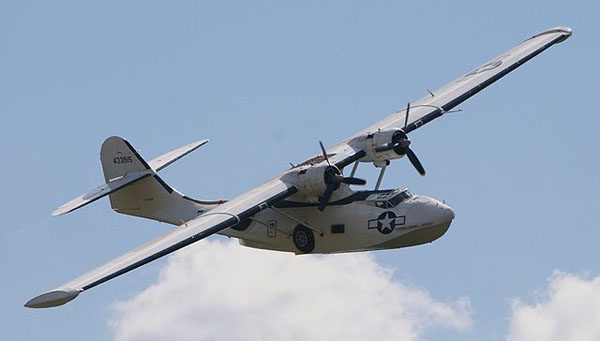
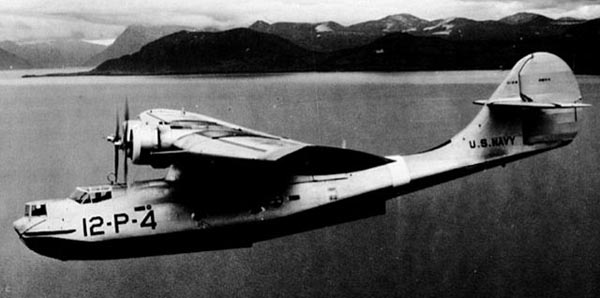
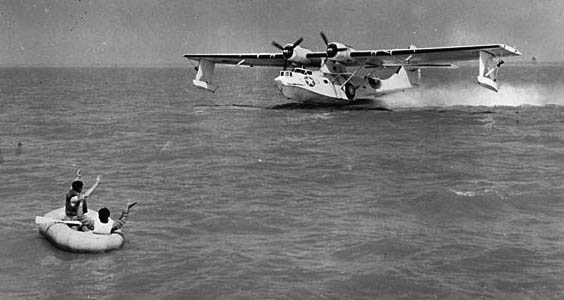
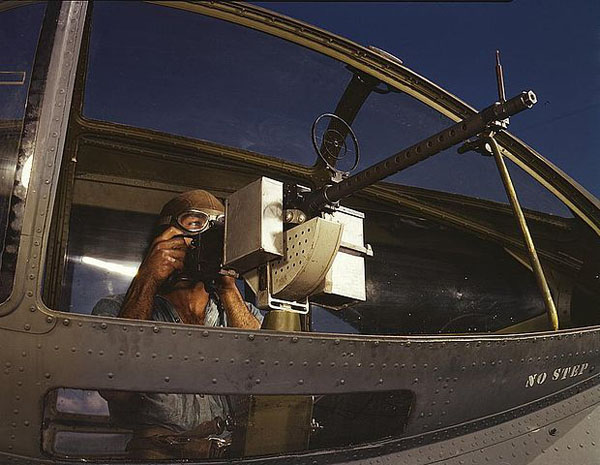
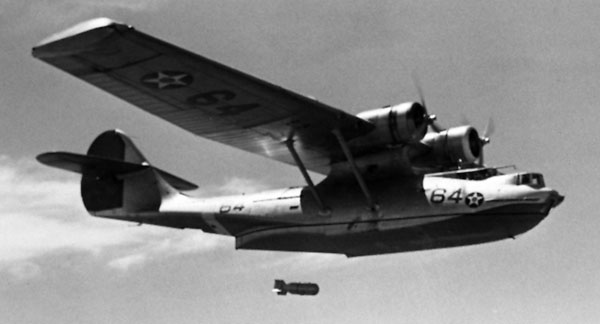
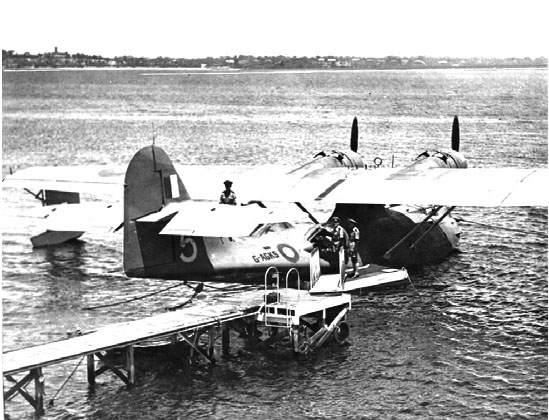

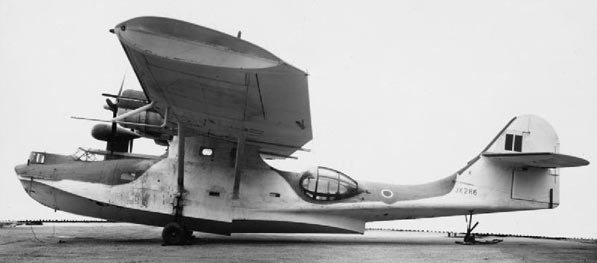
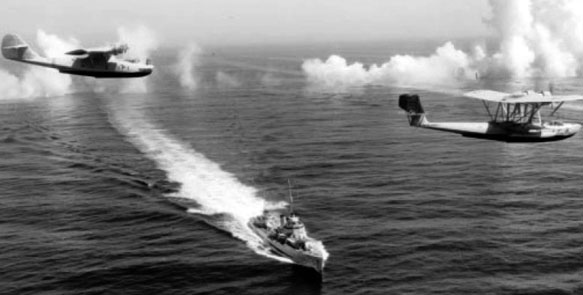
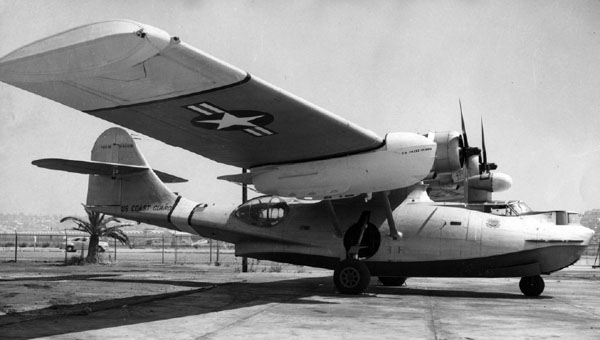
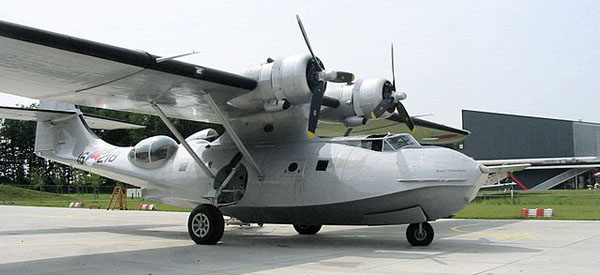
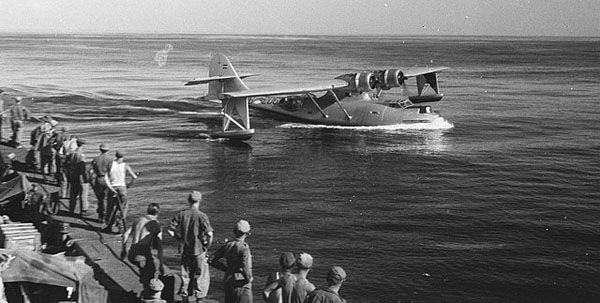
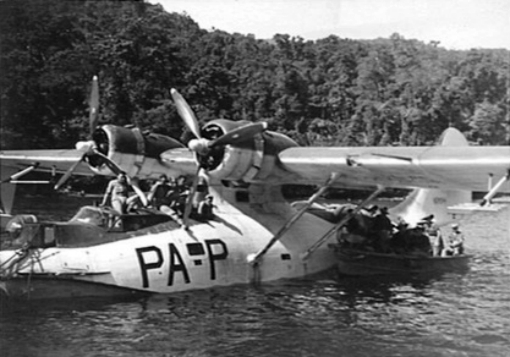
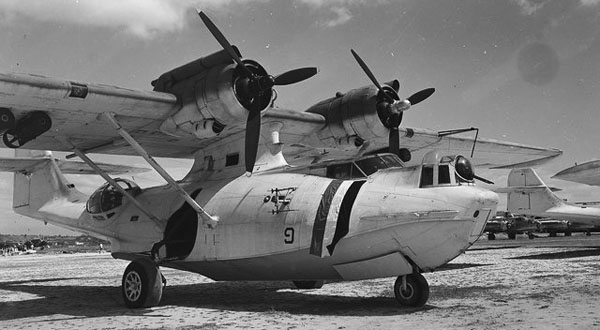

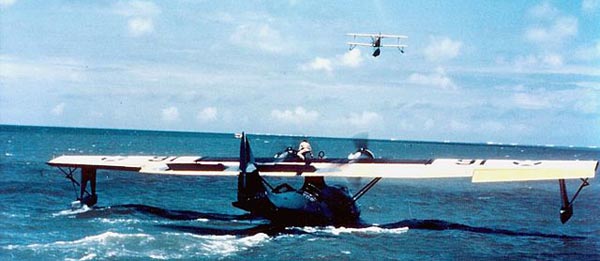
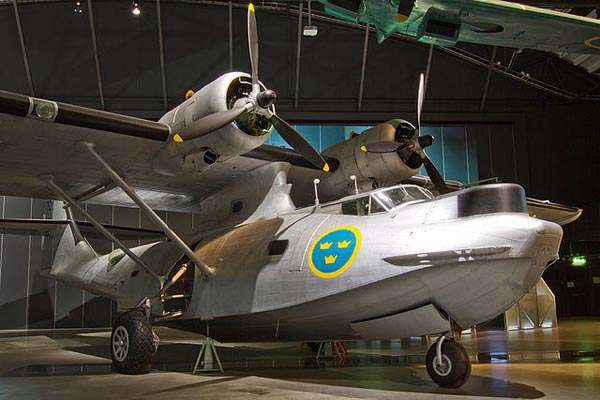
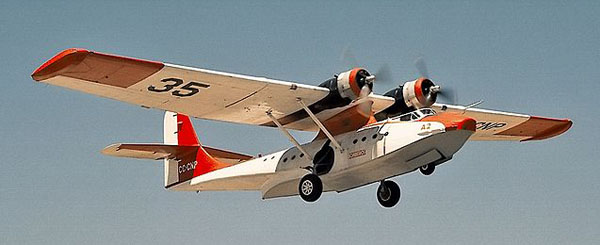
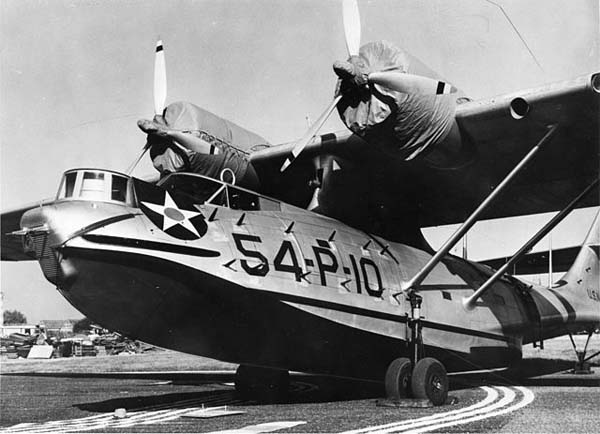
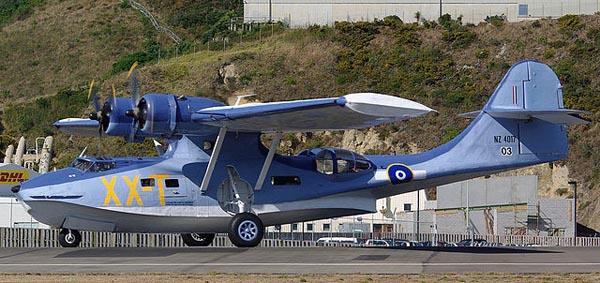
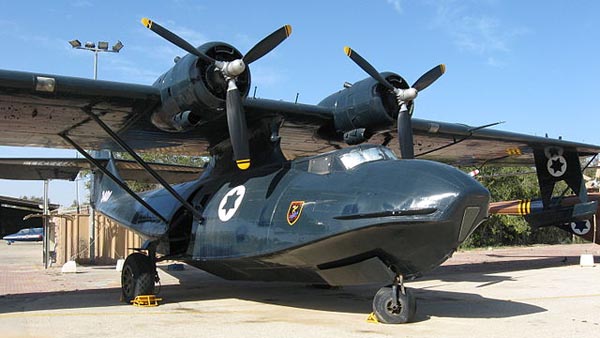
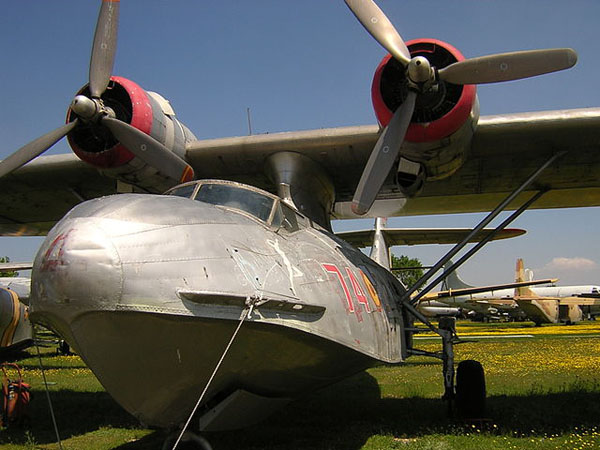
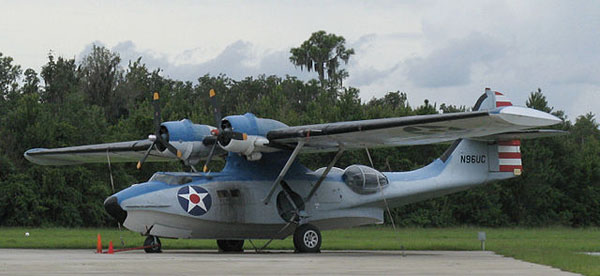
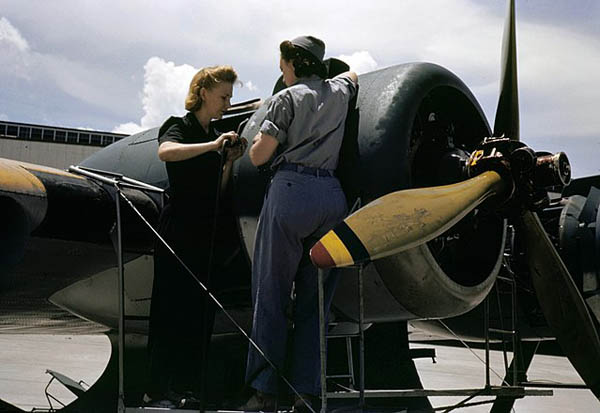
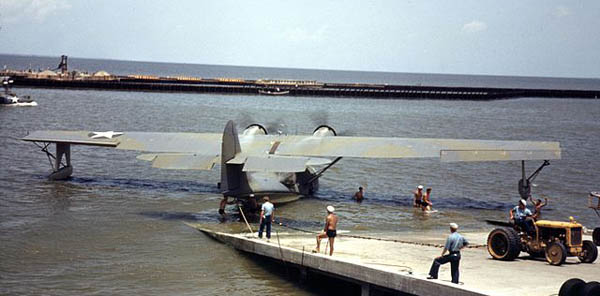
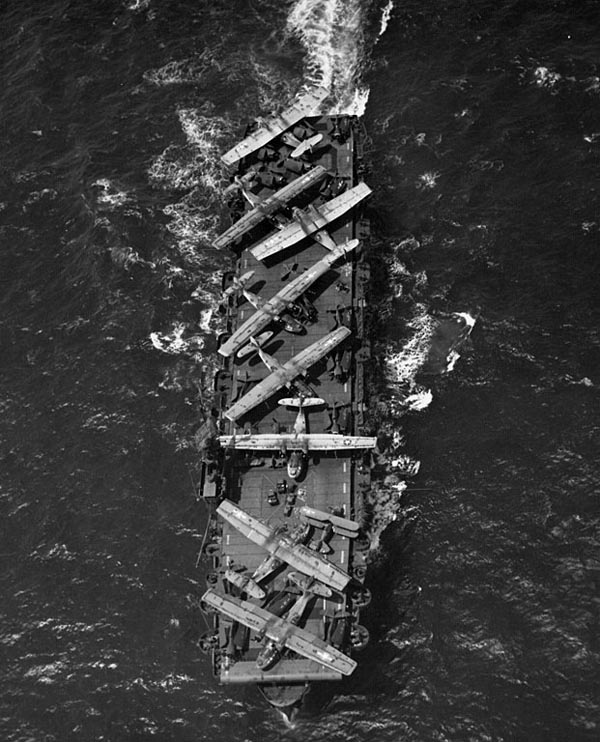

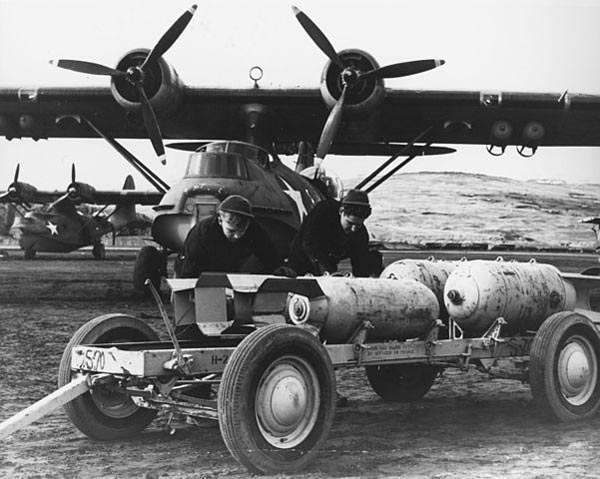
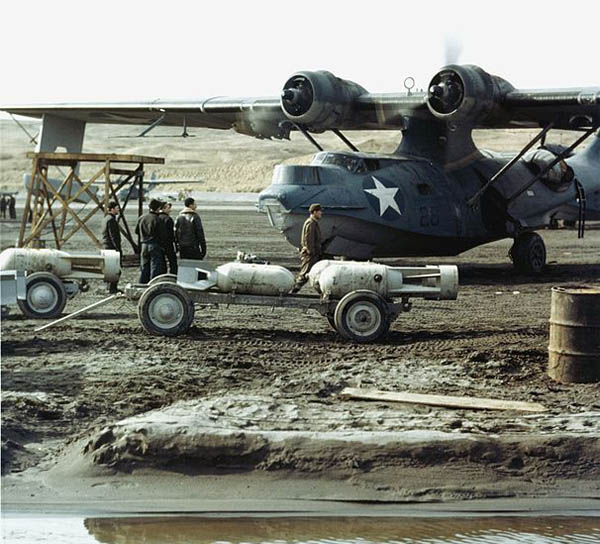
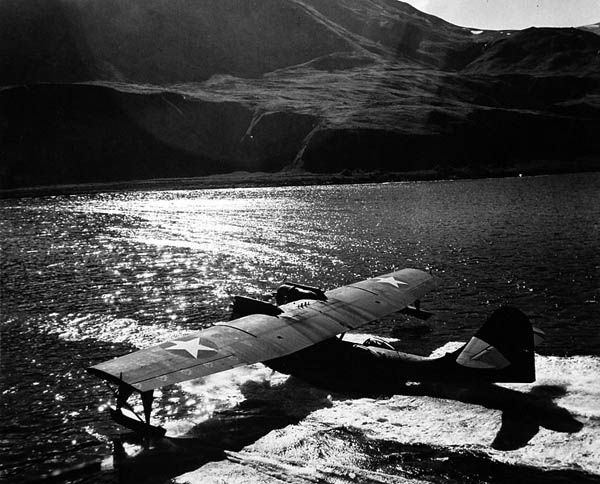
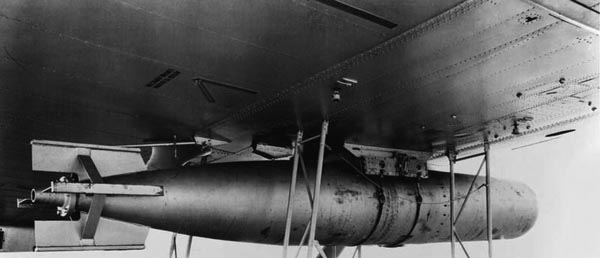
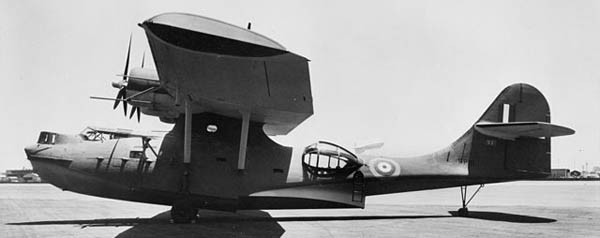
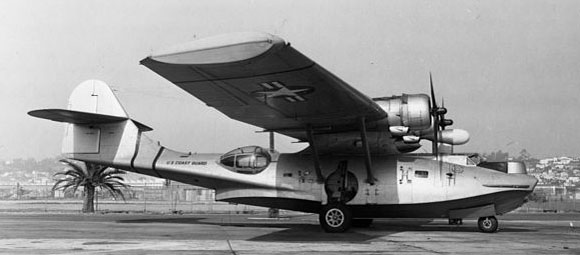
More CC photos: //commons.wikimedia.org/wiki/Category:Consolidated_PBY_Catalina



 Latest Facebook Entry -
Latest Facebook Entry -  X(Tweeter) Naval Encyclopedia's deck archive
X(Tweeter) Naval Encyclopedia's deck archive Instagram (@navalencyc)
Instagram (@navalencyc)





 French Navy
French Navy Royal Navy
Royal Navy Russian Navy
Russian Navy Armada Espanola
Armada Espanola Austrian Navy
Austrian Navy K.u.K. Kriegsmarine
K.u.K. Kriegsmarine Dansk Marine
Dansk Marine Nautiko Hellenon
Nautiko Hellenon Koninklije Marine 1870
Koninklije Marine 1870 Marinha do Brasil
Marinha do Brasil Osmanlı Donanması
Osmanlı Donanması Marina Do Peru
Marina Do Peru Marinha do Portugal
Marinha do Portugal Regia Marina 1870
Regia Marina 1870 Nihhon Kaigun 1870
Nihhon Kaigun 1870 Preußische Marine 1870
Preußische Marine 1870 Russkiy Flot 1870
Russkiy Flot 1870 Svenska marinen
Svenska marinen Søværnet
Søværnet Union Navy
Union Navy Confederate Navy
Confederate Navy Armada de Argentina
Armada de Argentina Imperial Chinese Navy
Imperial Chinese Navy Marinha do Portugal
Marinha do Portugal Mexico
Mexico Kaiserliche Marine
Kaiserliche Marine 1898 US Navy
1898 US Navy Sovietskiy Flot
Sovietskiy Flot Royal Canadian Navy
Royal Canadian Navy Royal Australian Navy
Royal Australian Navy RNZN Fleet
RNZN Fleet Chinese Navy 1937
Chinese Navy 1937 Kriegsmarine
Kriegsmarine Chilean Navy
Chilean Navy Danish Navy
Danish Navy Finnish Navy
Finnish Navy Hellenic Navy
Hellenic Navy Polish Navy
Polish Navy Romanian Navy
Romanian Navy Turkish Navy
Turkish Navy Royal Yugoslav Navy
Royal Yugoslav Navy Royal Thai Navy
Royal Thai Navy Minor Navies
Minor Navies Albania
Albania Austria
Austria Belgium
Belgium Columbia
Columbia Costa Rica
Costa Rica Cuba
Cuba Czechoslovakia
Czechoslovakia Dominican Republic
Dominican Republic Haiti
Haiti Hungary
Hungary Honduras
Honduras Estonia
Estonia Iceland
Iceland Eire
Eire Equador
Equador Iran
Iran Iraq
Iraq Latvia
Latvia Liberia
Liberia Lithuania
Lithuania Mandchukuo
Mandchukuo Morocco
Morocco Nicaragua
Nicaragua Persia
Persia San Salvador
San Salvador Sarawak
Sarawak Uruguay
Uruguay Venezuela
Venezuela Zanzibar
Zanzibar Warsaw Pact Navies
Warsaw Pact Navies Bulgaria
Bulgaria Hungary
Hungary

 Bundesmarine
Bundesmarine Dutch Navy
Dutch Navy Hellenic Navy
Hellenic Navy Marina Militare
Marina Militare Yugoslav Navy
Yugoslav Navy Chinese Navy
Chinese Navy Indian Navy
Indian Navy Indonesian Navy
Indonesian Navy JMSDF
JMSDF North Korean Navy
North Korean Navy Pakistani Navy
Pakistani Navy Philippines Navy
Philippines Navy ROKN
ROKN Rep. of Singapore Navy
Rep. of Singapore Navy Taiwanese Navy
Taiwanese Navy IDF Navy
IDF Navy Saudi Navy
Saudi Navy Royal New Zealand Navy
Royal New Zealand Navy Egyptian Navy
Egyptian Navy South African Navy
South African Navy






























 Ukrainian Navy
Ukrainian Navy dbodesign
dbodesign
Dear sir(naval encyclopedia):
Thank you for this fantastic website on the PBY and its iterations. My father, William E Scarborough,is one of the authors of the books you use as reference. I have his journals and letters and other artifacts that he collected from 1942 1944. I am compiling and editing this Memoir into a book. I would like to use some of the photographs that you have in this website in my book. The pictures that I have found through my father’s items do not show up very clearly. I will of course give this website credit for any pictures that I use if I have your permission to do so.
Thank you,
Kathy Scarborough
Hello Kathy, thanks ! Illustrations are from me and photos from wikimedia commons, check the link at the end of the post.
Good luck for your book,
Cheers
David